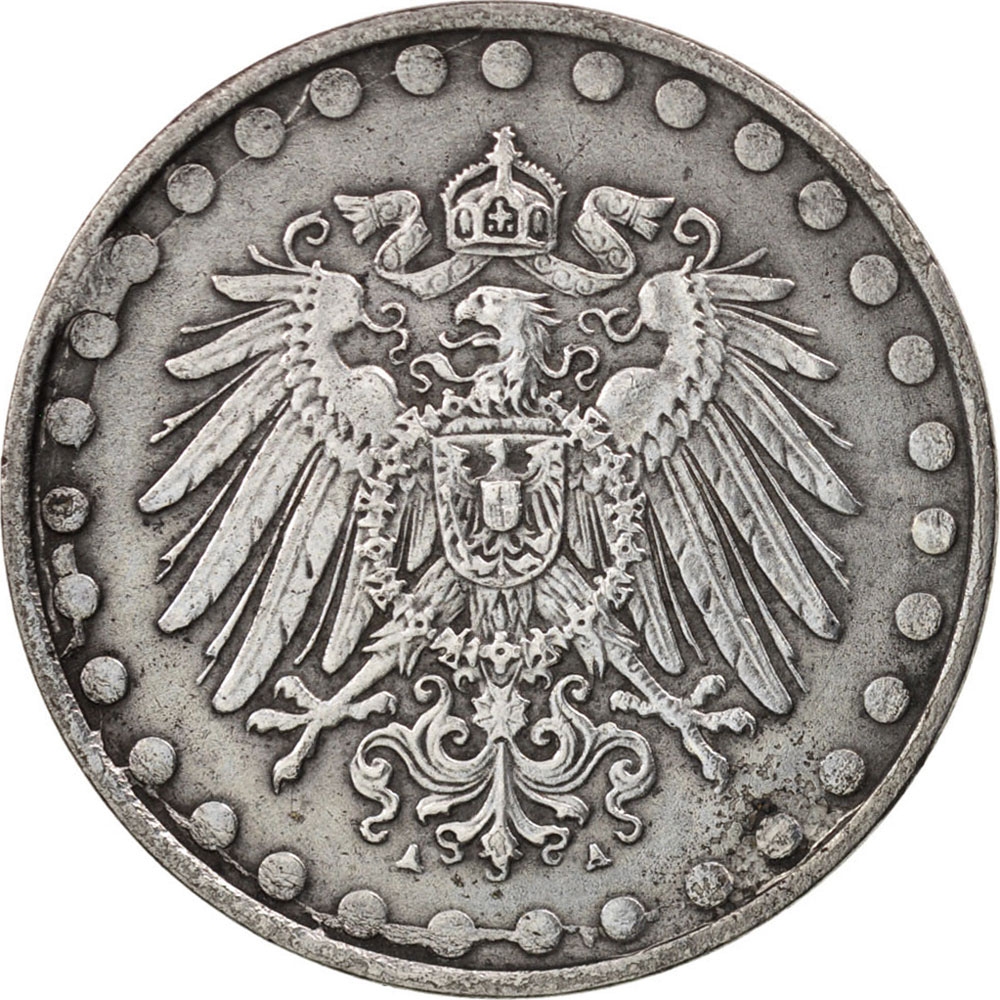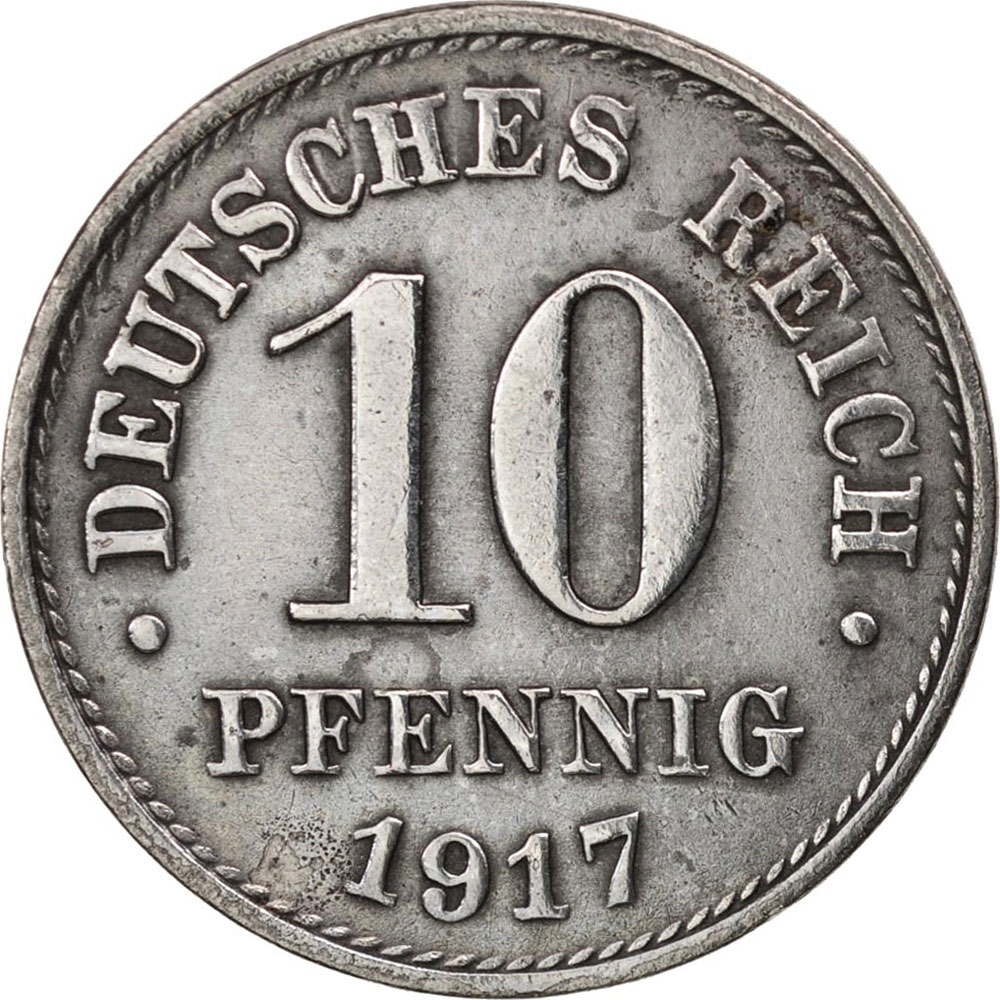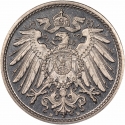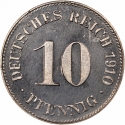You are about to finish your registration. Please check your mailbox (including spam folder). There should be a letter with a confirmation link. Check setting to make sure that your e-mail address is correct.
Send letter again
Obverse

|
The coat of arms of the German Empire (Reichsadler with shield on breast) within a border of 31 large dots. Mintmarks appears on both sides of eagle's tail. A A |
|---|---|
Reverse

|
Value in centre, denomination below. Lettering above. Date at bottom. · DEUTSCHES REICH · |
| Edge |
10 Pfennig
Small Shield, Beaded Border
KM# 20
Characteristics
| Material | Zinc Clad Iron |
| Weight | 3.6 g |
| Diameter | 21 mm |
| Thickness | 1.5 mm |
| Shape |
|
| Alignment | Medal |
| Mints |
Bavarian Central Mint (D) Berlin State Mint (A) Hamburg Mint (J) Karlsruhe State Mint (G) Muldenhütten Mint (E) Stuttgart State Mint (F)
|





